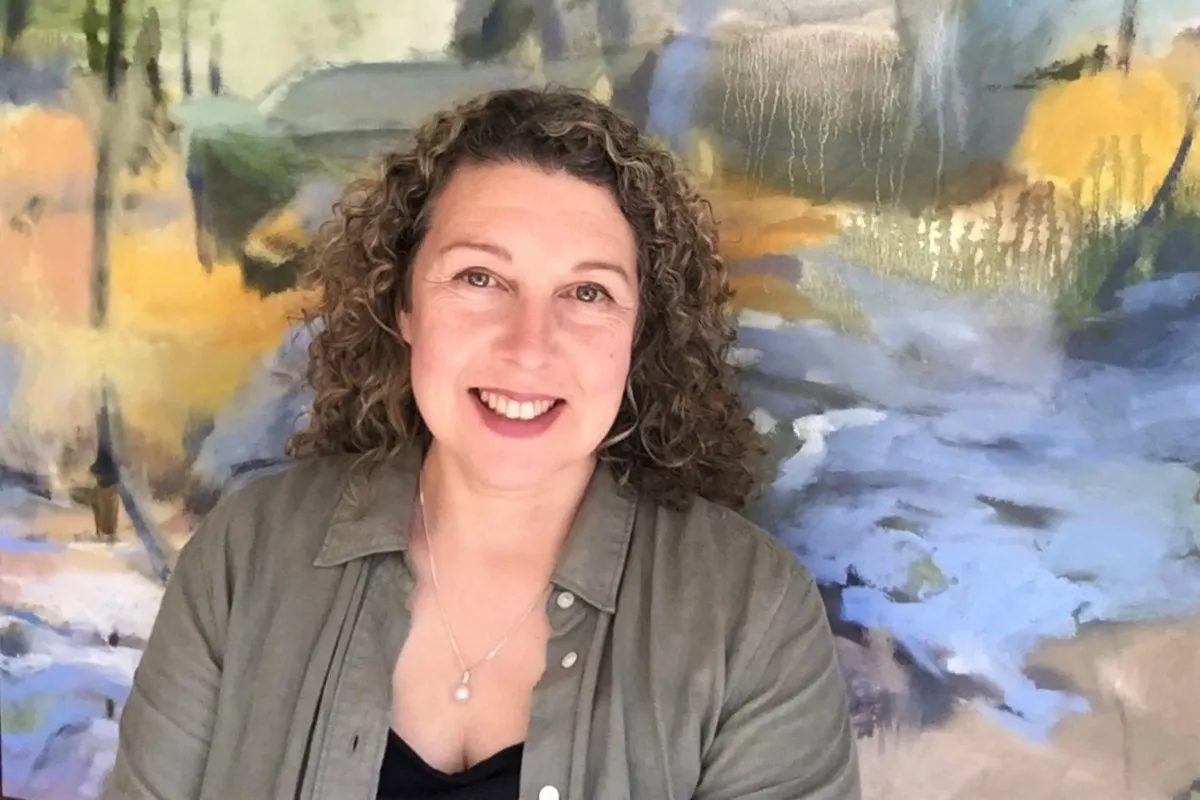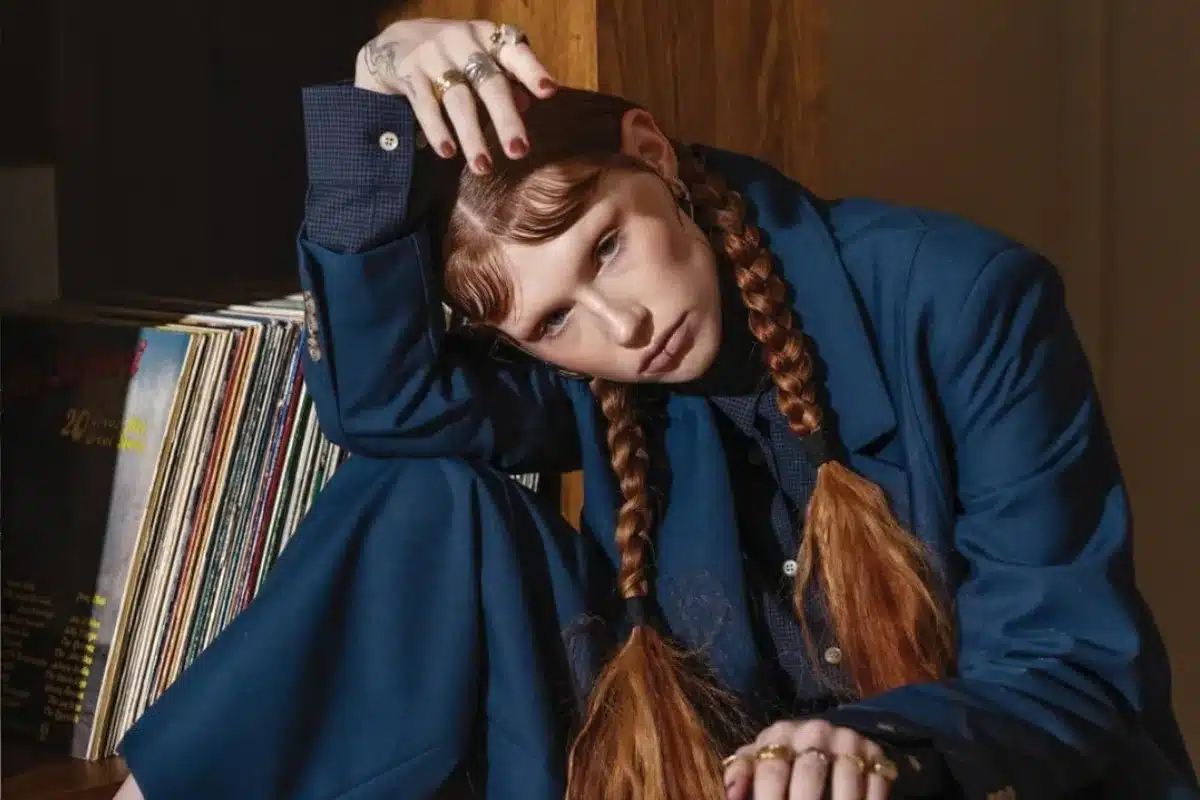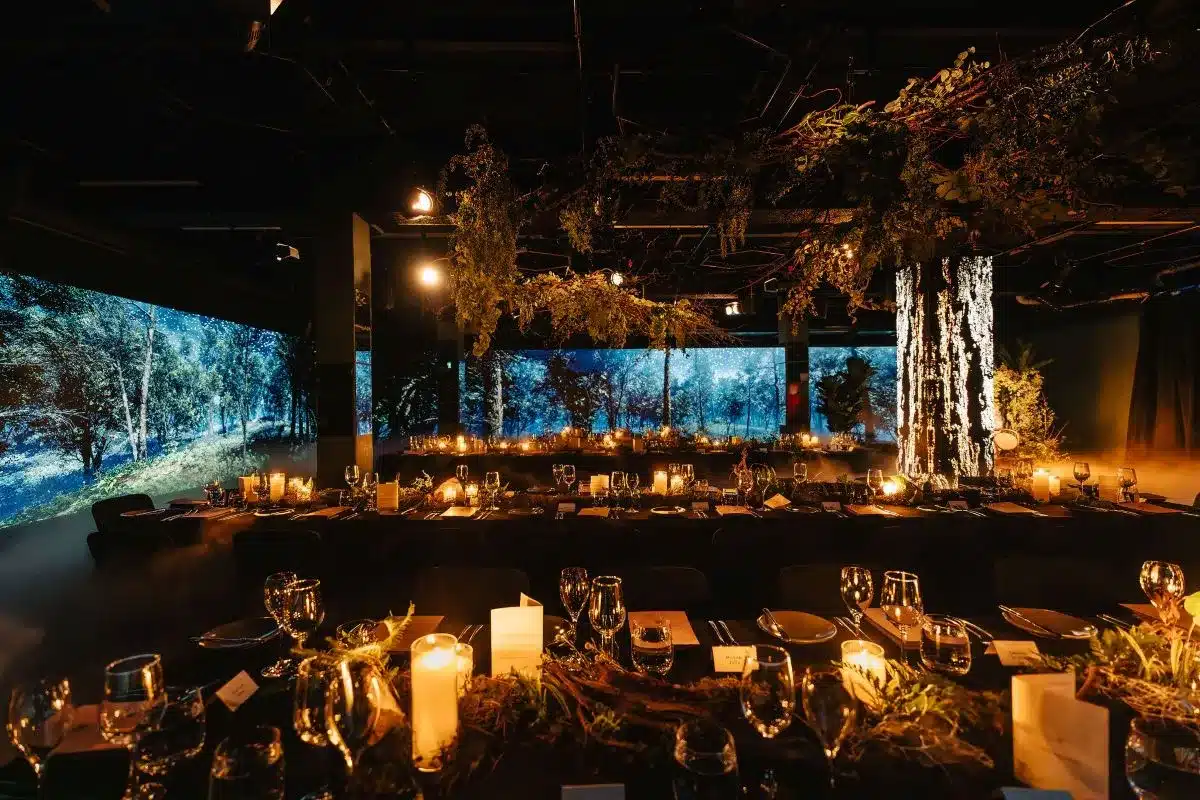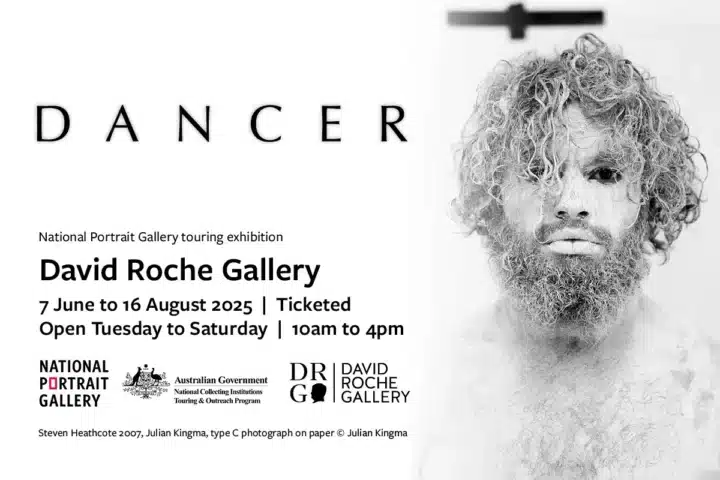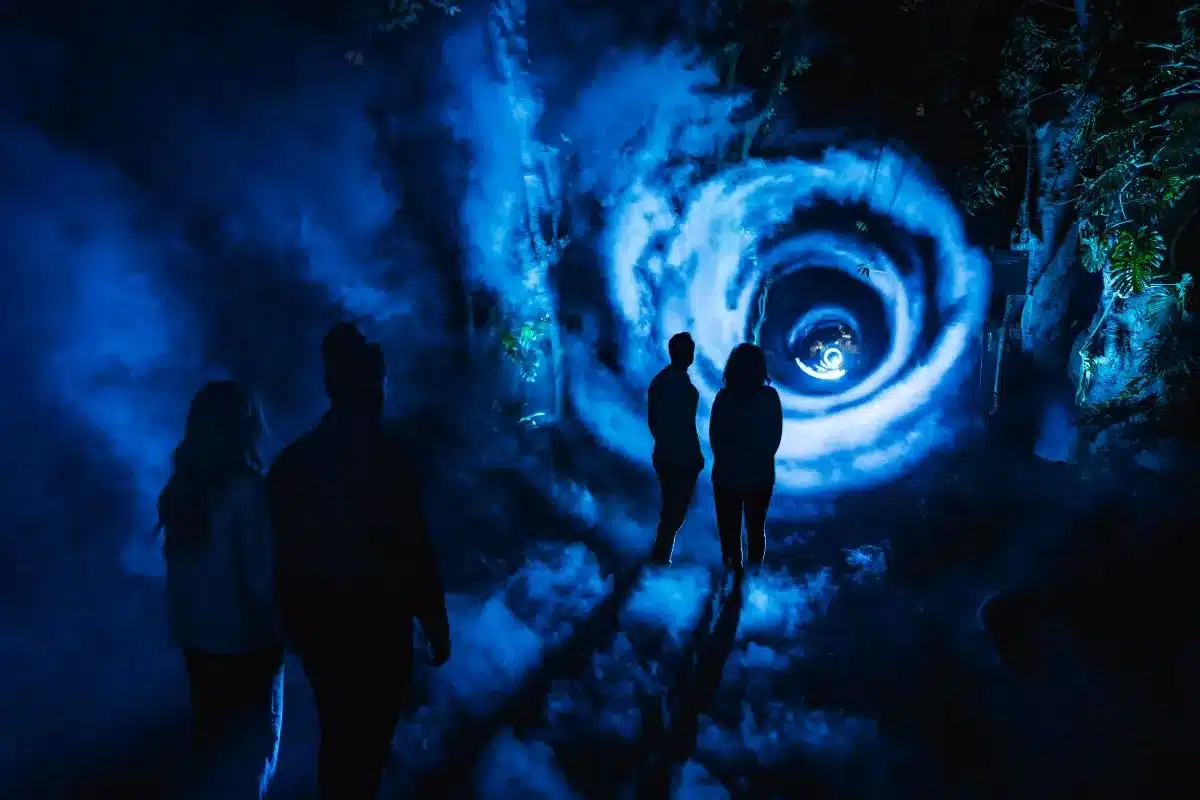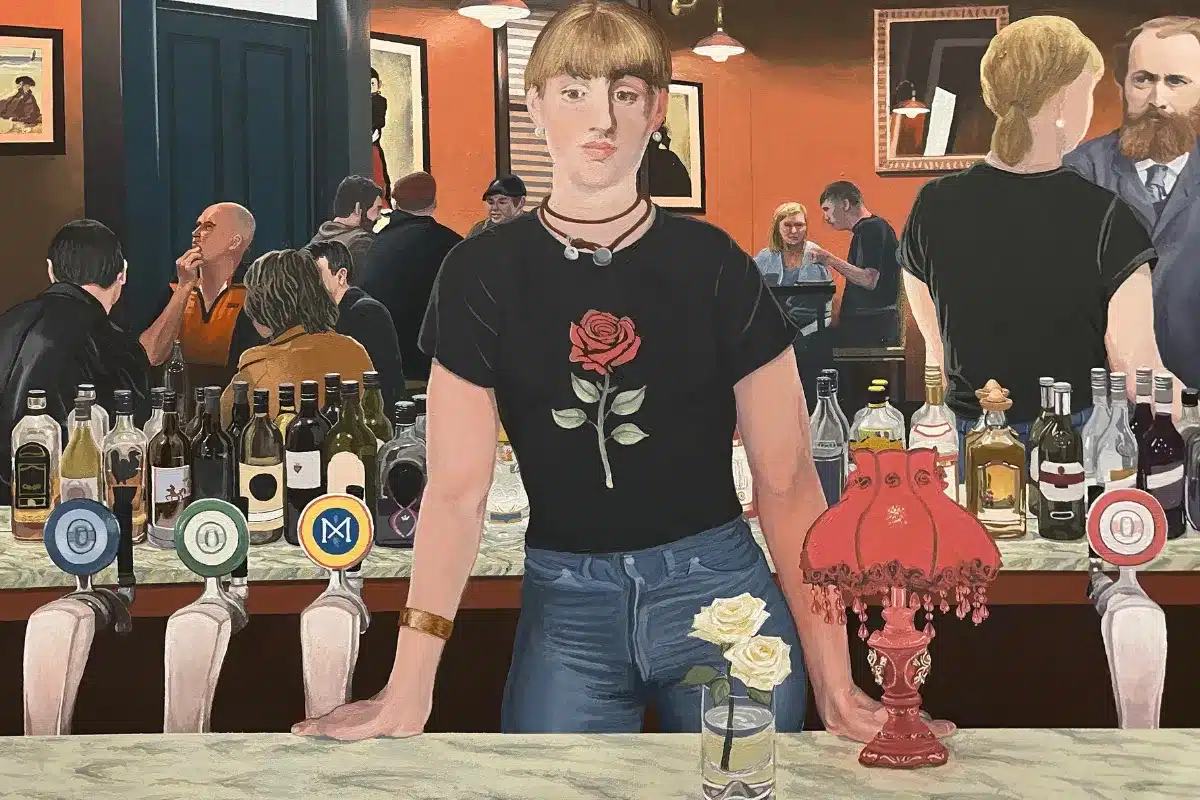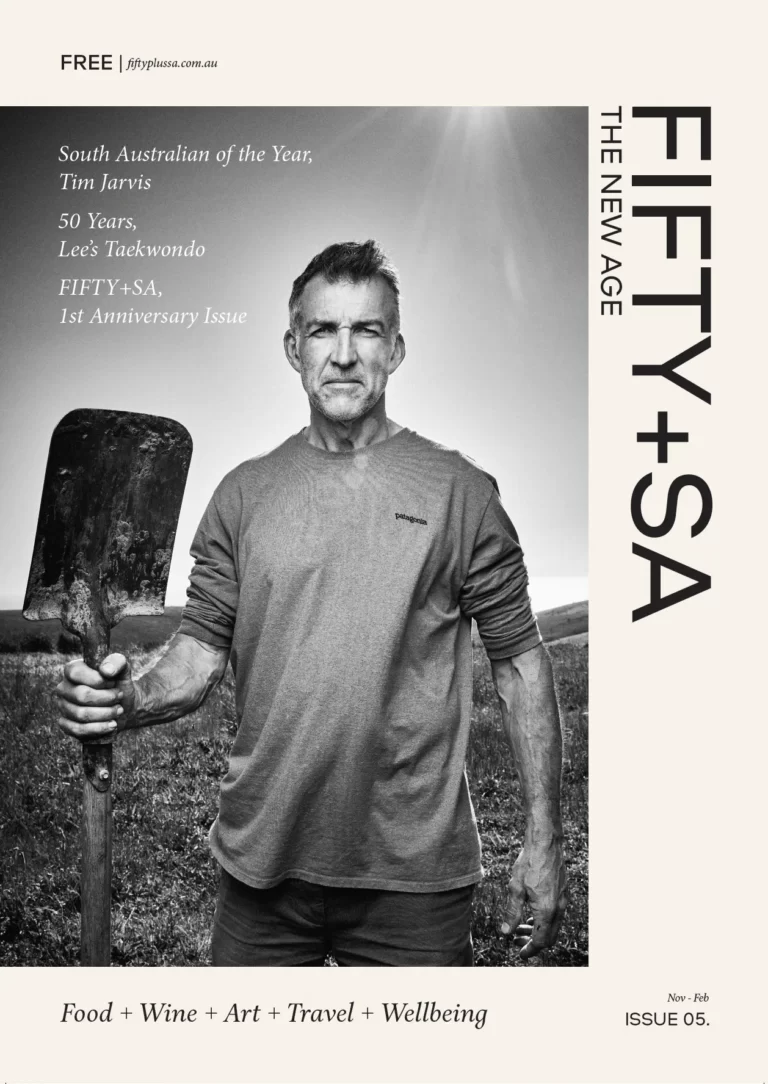In this interview, we chat with Cristina about her earliest artistic memories, her unique approach to portraying the intricate relationship between humanity and the environment, and the mysterious ‘Spirit of Place’ that weaves through her masterpieces.
Can you share one of your earliest memories of creating art, and how your creative passion was ignited?
As far as I can remember, I have always drawn with anything that was available – often just biros and pencils on scrap paper. I remember at age 8 being gifted a packet of DAS self-drying, modelling clay, from which I made a set of small sculptures of different dog breeds, which my neighbour offered to buy. I was always interested in colours and getting to know paint, but I didn’t have any to use, so at age 10 I used some wall paint that my dad had left over, and I bought a couple of small colours to mix with that, then I painted a mural of life-size running horses in my bedroom.
Growing up in Milan, Italy, I was the youngest child in a big family, and was often overlooked and pushed around by my siblings, so I think I needed to create my own world that belonged to me, that I didn’t have to share. I was always happiest when creating, and was a lonely child, so my parents allowed me to attend an academic art school at 14. For three years in art school, I was trained in traditional Italian art techniques of life drawing, clay bas-relief, and basic colour mixing. This was the foundation of my adult artistic journey which continued once I moved to Australia.
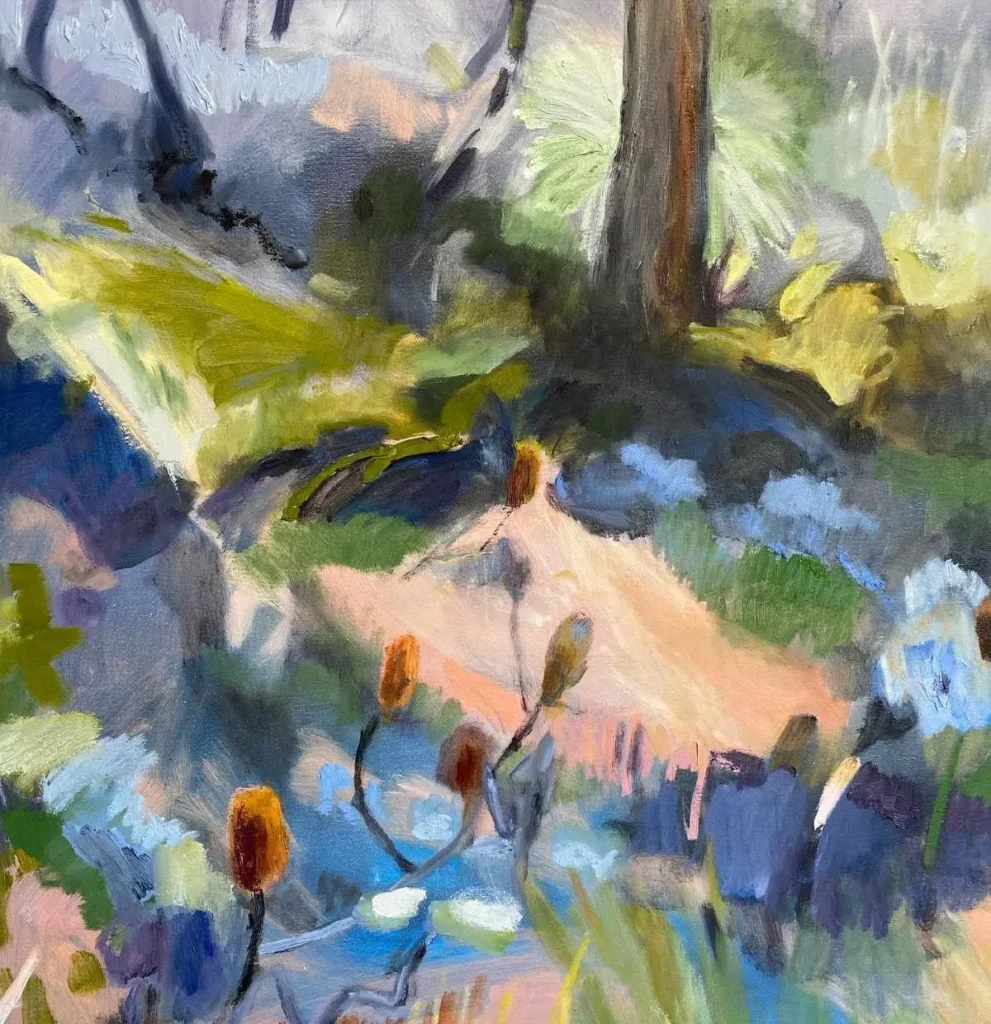
Your work explores the connection between human lives and the natural environment. How do you approach conveying this intricate relationship through your paintings, and what message of emotions do you hope viewers take away?
Nature and human beings have always been entwined, as humans are dependent on nature. When I’m in nature, I experience a deep sense of connection, respect and belonging. The best way for me to depict those feelings and emotions through my paintings has been to develop a personal language through colour, texture and the depiction of light. I think that some form of abstraction is the best way to express feelings and emotions.
I believe that painting my own experience and perception, and expressing my personal response to nature, can be a starting point for other people to reflect upon their own experiences in nature, and to open a conversation.
When people connect to what I do, I think that at some level they are recognising a part of themselves. It’s rewarding when viewers talk to me and share how something in my paintings sparked their own memories of place.
Through my paintings I am conveying my own experience, memory, and emotions of being in nature. These memories go back to my childhood of family holidays in the hills of northern Italy. It was my favourite place to be, surrounded by farm animals, endless green fields, and ancient oak and chestnut trees. I remember the rich scent of the forest earth in autumn, when my family and I spent many hours looking for porcini mushrooms and chestnuts. When I moved to Australia at age 19, spending time in the Adelaide hills was the best way for me to reconnect to nature and experience a sense of belonging.
We all have different relationships to the natural environment. We are part of nature, but sometimes in modern life we can find ourselves disconnected.
The concept of ‘Spirit of Place’ is intriguing. How does this idea manifest in your art, and why is it important for you to convey the essence of a specific location in your paintings?
Spirit of Place is an intriguing subject, as it is intangible, ephemeral and personal. It’s often connected to personal perception of the ‘energy’ of a place, sensing the unseen – some people feel it and some people don’t. I connect to a spirit of place when, without logical reason, a place feels familiar, comfortable, welcoming, invigorating, or relaxing. Something that makes me want to stay.
A good example for me is often connected with large trees or rock formations. I often enjoy lying down under a large tree. My favourite is the oak tree. It makes me feel peaceful, as if it is watching over me, and after a while I feel energised.
The Spirit of a place for me is very important. You know when you just go somewhere and you feel that it is somewhere special. I respond to the energy of that place and it just makes me feel at ease. To me a Spirit of Place is somewhere that I feel the energy is welcoming. It doesn’t need to be somewhere that is particularly aesthetically appealing.
It manifests in my art spontaneously through choice of colours and different paint applications, reflecting my experience of that place. As I mentioned above, light is one important element in my paintings, and the way I depict it expresses the sense of peace and ease that I experienced in that particular place.
It is not a requirement for me to always convey the essence of a specific location in my paintings. Sometimes I’m painting about a specific location, but other times I’m just painting about a general feeling or memory as a spontaneous act.
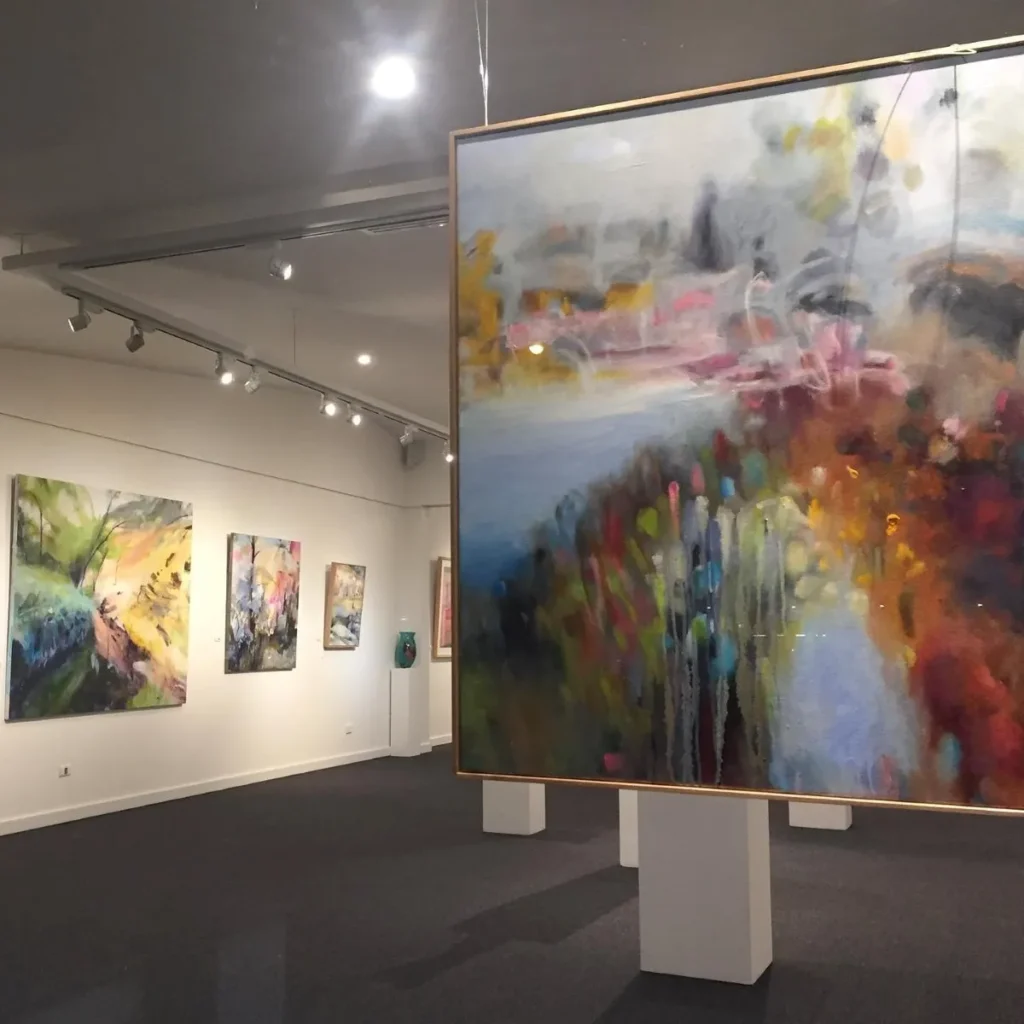
Looking ahead, what themes or aspects of the intersection between nature and humanity do you hope to explore in your future artwork?
In my upcoming personal exhibition ‘Deep Connections’ at Hahndorf Academy in late March 2024, I will be exploring my interactions with the natural landscape. Since graduation, my abstract paintings have evolved considerably through the spontaneous progression of my creative process. Although the source of inspiration for my art practice remains the same, recently I’ve been producing some smaller paintings that I would describe as ‘more representational’. These paintings are inspired by the same practice of walking and being in nature, but while still reflecting my personal and emotional response to the landscape, their focus is also on depicting my fascination with recognising plants, specific colours in the location that I’m walking through, and expressing my attachment to places that I’ve grown fond of.
As you navigate the golden years of your life, how has your perspective on art and creativity evolved, and how does it influence your current body of work?
I don’t use the term ‘golden years’. Throughout my life as an artist I have continually grown and evolved, both in my technical practice and my perspective on art and creativity. I have never been one of those people who, once they discover a technique that sells, reproduce it over and over. My quest is to keep learning and improving my techniques, so that I can best express myself and my feelings.
Feelings are constantly changing as one evolves and grows as a person. Age has nothing to do with it.
Your emotional responses also change as you go through life’s experiences. Through my artwork I am committed to exploring these changing feelings and emotions over time. Over the course of my career, I have done this through the diverse mediums of drawing, clay sculpture, metal sculpture, and painting. My current body of work is an exploration within the discipline of abstract and semi-abstract painting. This is what I am currently using to express myself.
Adelaide and South Australia seem to play a significant role in your life and artistic journey. What aspects of the city inspire you, and how has living here influenced the themes and subjects you choose to explore in your paintings?
Coming to Adelaide from the vibrant city of Milano in the late ‘80s, was quite a culture shock at first. I love Adelaide now, but for many years I didn’t fit in with the culture. That’s probably the reason why I connected to the natural environment of the hills and the coast, as they reflected some of the pleasant memories of my childhood. I think that Nature’s ‘language’ is universal, and that’s what influences my paintings.
Could you tell us about the experience of being a three time finalist in the Heysen Art Prize and what it means to you as an artist?
Any form of recognition is always welcome and may aid to improve an artist’s profile.
Can you share with us some of your favourite South Australian artists?
Angela and Hossein Valamanesh are some of my favourite artists. Hossein was an Iranian-born artist, who trained at the School of Fine Art in Tehran before moving to Australia. They met in the mid- 1970s at the South Australian School of Art and were together until Hossein’s death in 2022, sharing ideas and supporting each other in their endeavours to make art. Both working with multiple mediums, they made art separately as well as together. I particularly connect to their sculptures, which I find very sensitive in their expressions – they have both been interested in the natural environment, its vulnerability and its fragility.
Visit Cristina’s exhibition ‘Deep Connections’ at Hahndorf Academy in late March 2024.

